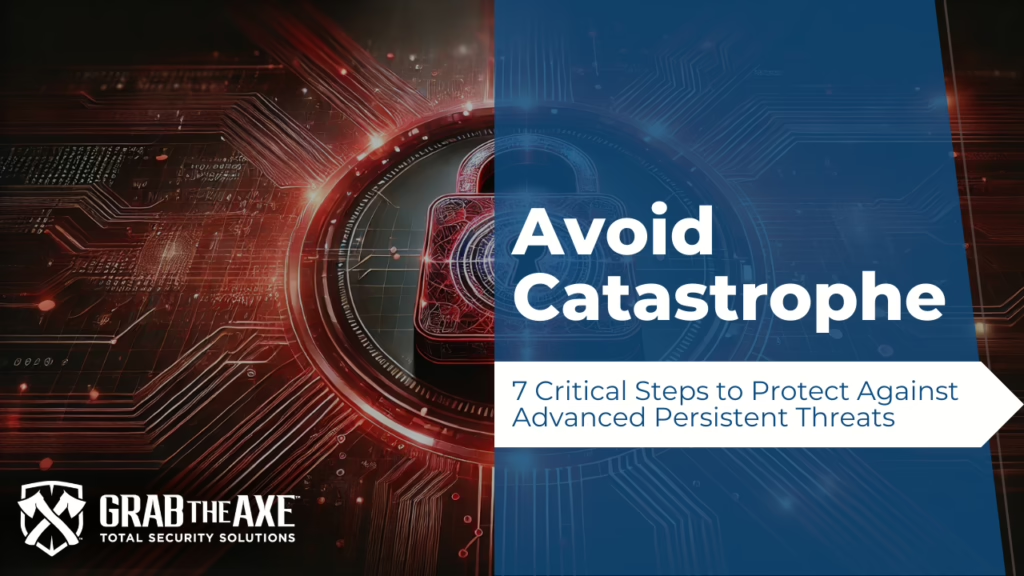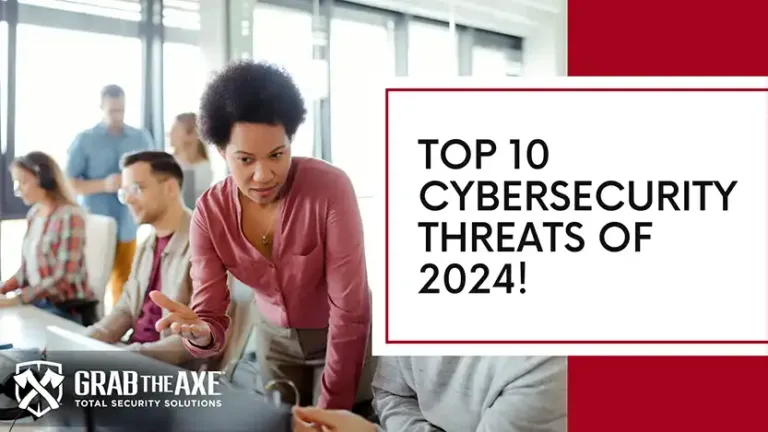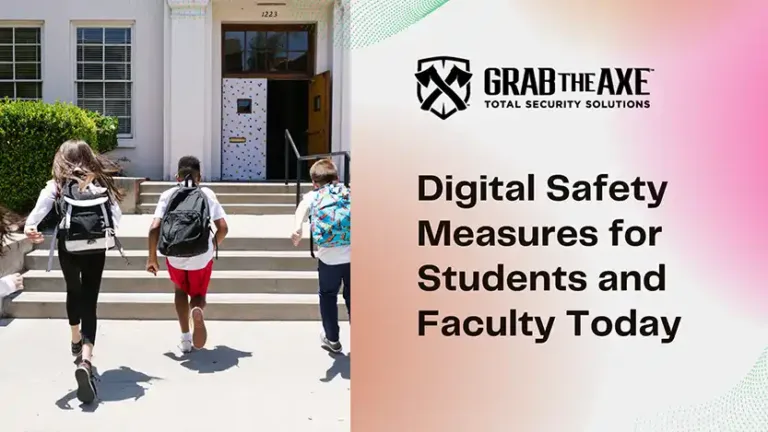Advanced persistent threats, or APTs, are sophisticated cyberattacks in which unauthorized individuals or organizations gain access to a network. Infiltrating a computer network, these threats often go undetected and can persist unnoticed for extended periods. Typically carried out by an organized group of cybercriminals, a state-sponsored organization, and, in some cases, individuals with political motivation. If successful, sensitive information can be compromised and stolen. Attackers can even disrupt operations, usually targeting larger organizations such as defense, manufacturing, and financial institutions. However, although it may be more difficult to detect compared to other forms of cyberattacks, here are 7 ways that your organization can protect itself against advanced persistent threats.
7 Essential Steps to Safeguard Your Organization Against Advanced Persistent Threats (APTs):
- Conducting Security Audits to Mitigate Advanced Persistent Threats
Security audits should be conducted on a network at their scheduled intervals and should not be skipped for any reason. These audits are a great way to check your network’s health and help identify any vulnerabilities that can be exploited. Identifying those vulnerabilities can help prevent any potential severe damage from occurring and fixing them, strengthening your network’s security.
- The Importance of Employee Training in Combating Advanced Persistent Threats
Spear-phishing emails are the simplest, yet most effective, way that attackers can gain unauthorized access to a network. Training them to spot a potential breach attempt can help prevent an ATP; these emails may seem legitimate and contain a malicious link that can be downloaded. They should be able to identify an email that may seem suspicious and how to go about reporting them; all it takes is one individual to click on the malicious link, and they’re in.
- Implementing Advanced Security Measures Against Persistent Cyber Threats
Having security measures in place is great no matter what, but for advanced persistent threats, you will definitely need a little more. Advanced security measures such as intrusion detection systems, endpoint protection, and threat intelligence will do a far better job in keeping your network safe and detecting those threats a lot better. It is important to note that simply having these tools is not enough; frequent monitoring and action will still need to be taken.
- Why a Zero Trust Policy is Critical for Network Security
You can never assume that everything within a network is safe, even with adequate measures set in place. Any access request should require verification, and only those with the proper credentials should be able to access certain things; not every individual should have the same level of access. Having this policy acts sort of like a security guard for your network, verifying those credentials before granting access.
- How Whitelisting Apps Protects Your Organization from APTs
Although within your organization you more than likely have applications already preset in your devices, it shouldn’t be a surprise that an employee may attempt to download applications on their own or attempt to visit websites that aren’t authorized, i.e., social media. By whitelisting applications or sites, any authorized installations or visits immediately provide a notification, allowing proper action to keep your network secure.
- Using Automated Response Systems to Tackle Advanced Persistent Threats
Automated response systems are a great tool to have; they allow for rapid response to threats. By isolating any affected areas, it allows for faster and easier neutralization of the detected threats. However, frequent monitoring should still be done, and manual action may be needed; you shouldn’t solely rely on these tools to do everything for you.
See how AI-powered cybersecurity tools enable real-time responses to evolving threats.
- Creating an Effective Incident Response Plan for APT Security
A cyberattack will happen eventually; it isn’t a matter of will it happen but rather when will it happen. Having an adequate plan in place to respond to any incident is imperative; knowing how to respond to threats can prevent a lot of downtime, financial losses, and loss of trust from the general public. The goal is to minimize recurrences since they cannot be entirely prevented.
Final Thoughts on Advanced Persistent Threat Mitigation Strategies
Advanced Persistent Threats (APTs) are some of the most sophisticated and damaging forms of cyberattacks, posing significant risks. As attackers evolve their methods, organizations must follow suit and adapt in order to strengthen their defenses by implementing adequate strategies. The seven steps outlined—security audits, employee training, advanced security measures, zero trust policies, whitelisting applications, automated response systems, and incident response plans—serve as critical pillars in safeguarding against APTs. These measures not only enhance the detection and prevention of threats but also ensure a swift response to minimize damage when incidents occur. By adopting these strategies, organizations can better protect sensitive data, maintain operational continuity, and preserve trust in an increasingly threat-filled digital landscape. While there are more steps than can be taken, these 7 steps are some of the top steps that can be taken.
References
A Guide To Protecting Against Advanced Persistent Threats (APTs). (n.d., n.d. n.d.). Retrieved from TechDogs: https://www.techdogs.com/td-articles/trending-stories/a-guide-to-protecting-against-advanced-persistent-threats-apts
Smoliansky, M. (2020, August 8). How to Defend Against Advanced Persistent Threats. Retrieved from Deep Instinct: https://www.deepinstinct.com/blog/how-to-defend-against-advanced-persistent-threats
Winterfield, S., & Rathe, S. (2023, November 8). 6 Strategies to Combat Advanced Persistent Threats. Retrieved from Akamai: https://www.akamai.com/blog/security/6-strategies-to-combat-advanced-persistent-threats
Advanced Persistent Threat (APT) FAQs
What is an Advanced Persistent Threat (APT)?
An APT is a type of sophisticated cyberattack where unauthorized individuals or organizations gain long-term access to a network, often remaining undetected for extended periods. These attacks are typically carried out by organized groups with significant resources, such as cybercriminals or state-sponsored actors. The goal is often to steal sensitive information, disrupt operations, or gain a strategic advantage.
How can my organization protect itself from Advanced Persistent Threats?
There are seven key steps organizations can take to protect against APTs:
- Conduct Regular Security Audits: Identify and address network vulnerabilities before they can be exploited.
- Employee Training: Educate staff on identifying and reporting suspicious emails and phishing attempts, which are common entry points for APTs.
- Implement Advanced Security Measures: Deploy robust security tools like intrusion detection systems, endpoint protection, and threat intelligence platforms.
- Enforce a Zero Trust Policy: Assume no user or device is inherently trustworthy, and require verification for all access requests.
- Whitelist Applications: Restrict application downloads and website visits to authorized sources only, limiting the attack surface.
- Use Automated Response Systems: Enable rapid response to identified threats, isolating affected areas and neutralizing attacks faster.
- Develop an Incident Response Plan: Establish a clear plan of action to handle cyberattacks, minimizing downtime and damage.
What are the most common targets of Advanced Persistent Threats?
While any organization can be a target, APTs often focus on larger organizations or those with valuable data, including:
- Defense and Intelligence Agencies: Targeted for sensitive military or intelligence information.
- Financial Institutions: Sought after for financial data and systems access, enabling large-scale theft or disruption.
- Manufacturing Companies: Valuable for intellectual property, trade secrets, or access to critical infrastructure.
Why are employee training and awareness so important in preventing Advanced Persistent Threats?
APTs frequently exploit human vulnerabilities. Well-trained employees are better equipped to identify social engineering tactics like spear-phishing emails, which are often the initial attack vector. By recognizing and reporting suspicious activities, employees play a critical role in early detection and prevention.
What is a Zero Trust Policy and why is it crucial for defending against Advanced Persistent Threats?
A Zero Trust Policy assumes that no user or device, whether inside or outside the network, is inherently trustworthy. It enforces strict verification for every access request, regardless of the source. This approach limits lateral movement within a network if a breach occurs, minimizing the potential damage an attacker can inflict.
How can automated response systems help mitigate Advanced Persistent Threats?
Automated response systems react rapidly to detected threats, containing their spread and limiting the impact. They can automatically isolate infected systems, block malicious traffic, and initiate recovery procedures, buying valuable time for security teams to address the situation.
What should an Incident Response Plan include?
A robust Incident Response Plan should include:
- Clearly defined roles and responsibilities for incident response team members.
- Procedures for detecting, containing, and eradicating threats.
- Steps for recovering compromised systems and data.
- Communication protocols to inform stakeholders and the public.
Can Advanced Persistent Threats be completely prevented?
While complete prevention is challenging, a multi-layered approach combining advanced security measures, employee awareness, and robust incident response significantly reduces the risk of successful APTs. Organizations must remain vigilant, adapt to evolving attack methods, and continuously strengthen their defenses to stay ahead of determined adversaries.






This Post Has 3 Comments
Pingback: Secure Remote Access Demystified: 7 Steps to a Bulletproof VPN - Grab The Axe
Pingback: Mastering Multi-Factor Authentication: 10 Proven Techniques to Secure Your Network - Grab The Axe
Pingback: The Ultimate Guide to Cloud Security Best Practices in 2024 - Grab The Axe
Comments are closed.